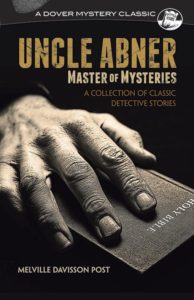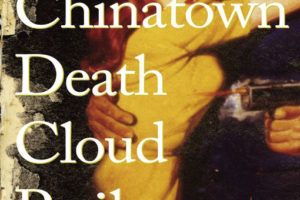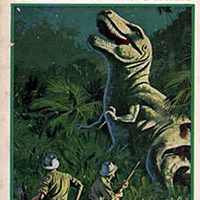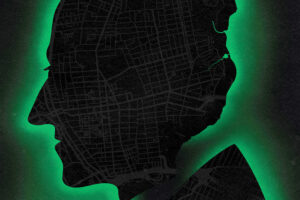 Thanks to an anthology of “occult detectives,” I discovered an unusual detective, who really isn’t an occult detective or one who dealt with occult matters: Uncle Abner. Created by Melville Davisson Post (1869-1930), Uncle Abner appeared in the 1910s and ’20s in a variety of slick magazines.
Thanks to an anthology of “occult detectives,” I discovered an unusual detective, who really isn’t an occult detective or one who dealt with occult matters: Uncle Abner. Created by Melville Davisson Post (1869-1930), Uncle Abner appeared in the 1910s and ’20s in a variety of slick magazines.
Post, a former lawyer, wrote several characters in detective fiction, including lawyers Randolph Mason and Colonel Braxton, and the detectives Sir Henry Marquis and Monsieur Jonquelle. But his most well-known character is Uncle Abner.
The Uncle Abner stories are set in West Virginia in the 1840s and 1850s. Being short stories, there are few reoccurring characters. Abner, no last name is ever given, appears in all, of course. All stories are narrated by his nephew, Martin, who is the son of Abner’s brother Rufus, who appears in a few stories. Martin appears in the first few stories, but not the later ones, but he narrates them all. At the time the stories take place he is around 10 or so, but the stories are told much later, most likely when he was an adult. Abner is a bachelor, and we never hear about Martin’s mother. The only other character to appear more than once is Justice of the Peace Squire Randolph.
All the stories are about murder or theft, and Abner solves them all by keen observation. But, since Abner is not an officer of the law, he does not arrest anyone. The stories are varied. One is a classic “locked room” murder, with two people who claim to have killed the victim, but couldn’t have. Another is about proving the innocence of two men who are about to be lynched for murdering another. Or are they innocent? Another shows an accidental death is not really an accident. The first story has a man who appear to be possessed by the devil and plans on killing Martin and taking his money. Abner stops him and sends him on his way.
Abner, as the central character, is unique and is as much an interest in these stories as the mystery itself. He is described as “one of those austere, deeply religious men who were the product of the Reformation. He always carried a Bible in his pocket and he read it where he pleased. Once the crowd at Roy’s Tavern tried to make sport of him when he got his book out by the fire; but they never tried it again. … Abner belonged to the church militant, and his God was a war lord. … He was one of those austere, deeply religious men who might have followed Cromwell, with a big iron frame, a grizzled beard and features forged by a smith. His god was the god of the Tishbite, who numbered his followers by the companies who drew the sword. The land had need of men like Abner.” He accomplishes what he needs by force of will, not force of strength.
If you wish to read the stories, there are several options. Uncle Abner: Master of Mysteries (1918) reprints the first 18 stories. The stories originally appeared in a variety of magazines. It has since been reprinted by Dover Books, which I got. The final four stories, written 10 years later, and apparently not as good, were reprinted in The Methods of Uncle Abner. There is also a complete Uncle Abner collection, but it may be hard to find.
Surprisingly, the estate of Post asked John F. Suter to write further Uncle Abner stories. He did a further 15 stories, five of them included in Old Land, Dark Land, Strange Land (1996). Dover has also reprinted this one. But I’m not sure how these stories are, as they have Martin’s mother being Abner’s sister! Yes, she appears. This is a mistake as Martin’s father is Abner’s brother. Oops!
But this is an interesting character. I’ve enjoyed the first collection. He is also one of those characters who is so unique that he may be hard to handle if you don’t get the character and his environment correct. Check him out and see if you agree.



